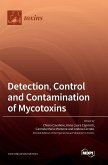The eradication of vector-borne diseases is threatened by the limited range of available insecticides, leading, inevitably, to the development of resistance. This is particularly concerning for malaria control, which relies heavily on insecticide-treated nets (ITNs) and indoor residual sprays (IRS). New chemistries are being developed, and innovative deployment of insecticides may play a role in overcoming resistance, either through new types of tools or new means of distribution. A variety of novel product types and vector control strategies are under development and evaluation, which is to be celebrated, but a strong evidence base is needed to guide effective operational deployment decisions. Novel approaches should be supported by robust data collected using appropriate and validated methods to monitor efficacy, durability, and any emerging resistance. This reprint presents original research into developing and characterizing new vector control products, as well as understanding and monitoring insecticide resistance. Review articles explore the impact of insecticide resistance and offer guidance on insecticide choice in the face of pyrethroid resistance. Consensus methodologies are presented, in the form of standard operating procedures (SOPs) designed to be adopted and used to generate reproducible data that can be compared and interpreted across and between studies. It is hoped that this collection of articles offers inspiration and guidance on how consistent data can be generated to inform more effective development, evaluation, and use of new and existing vector control tools.
Hinweis: Dieser Artikel kann nur an eine deutsche Lieferadresse ausgeliefert werden.
Hinweis: Dieser Artikel kann nur an eine deutsche Lieferadresse ausgeliefert werden.








